Beaches Basics
Beaches
A beach is a zone of loose particles that covers a shore. Larger particles are associated with more sloped beach.
Beach Anatomy
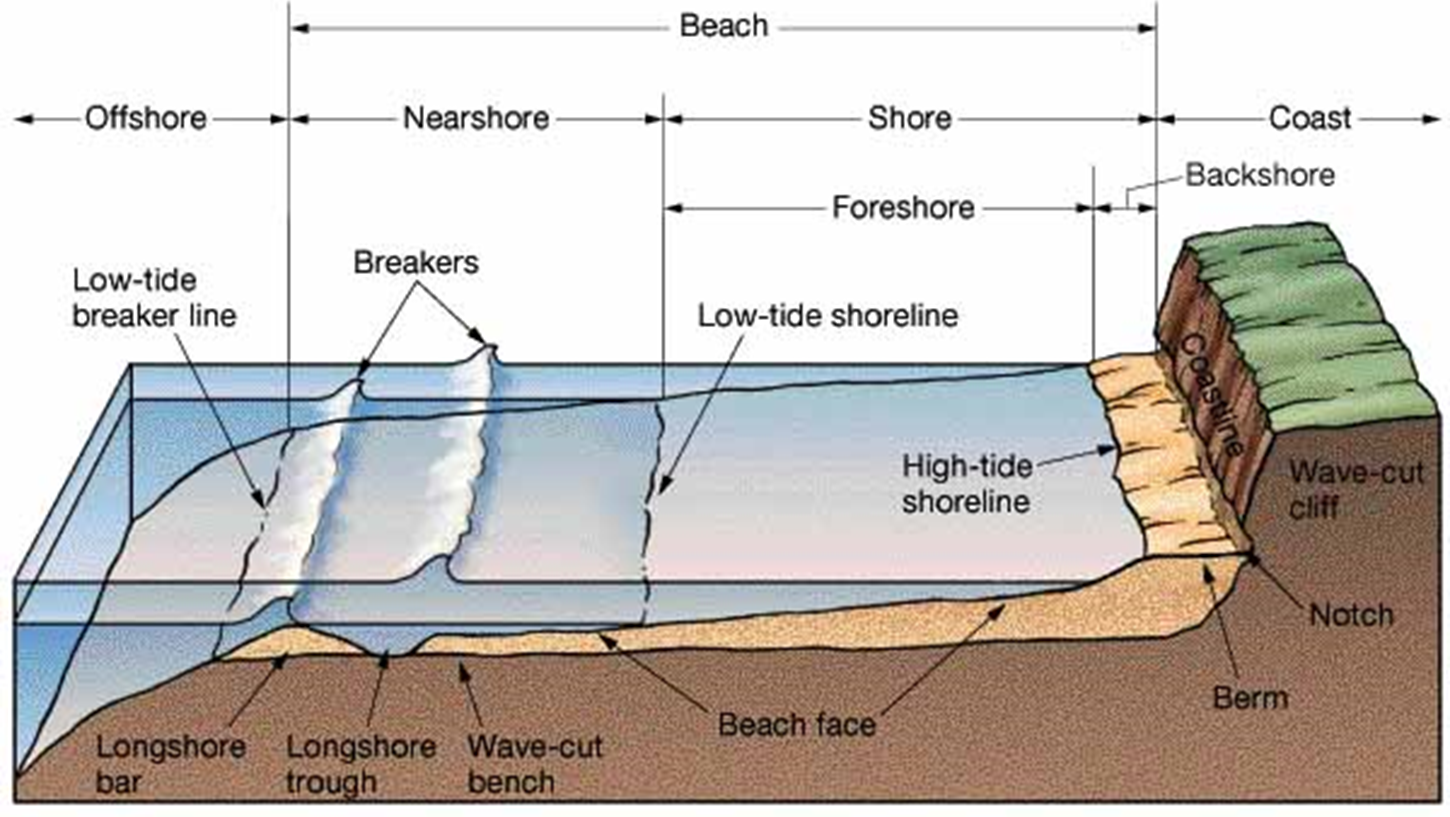
- Beach = sand/sediment along a coast. Contains the shore, nearshore & offshore
- Shore: seaward lowest tide to waves influence on land
- Backshore: submerged during highest tide,strong storms
- Foreshore: extends past low tide
- Nearshore: from the low-tide shoreline to the low-tide breaker line
- Offshore: low tide to limit of wave reworking
- Wave-cut terraces: flat beveled bedrock formed by waves & moving sediments
- Troughs & bars: parallel shore bars grow during winter, worn away in summer
- Berms: where foreshore/backshore meet, formed by shoreward deposition have higher elevation or slope high berms = winter; lower berms = summer have flat top, maybe ridge or berm crest
- Shore: seaward lowest tide to waves influence on land
Classifying Beaches
Beaches are classified by:- Shape & structure - The size of the particles on the beach will determine the steepness of the slope of the beach. The finer the particle the flatter the beach, and the coarser the particle the steeper the slope.
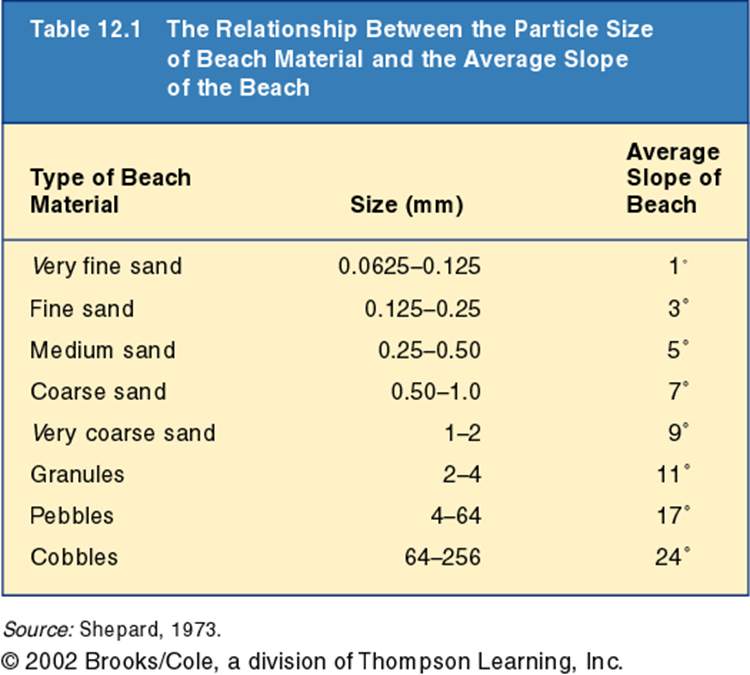
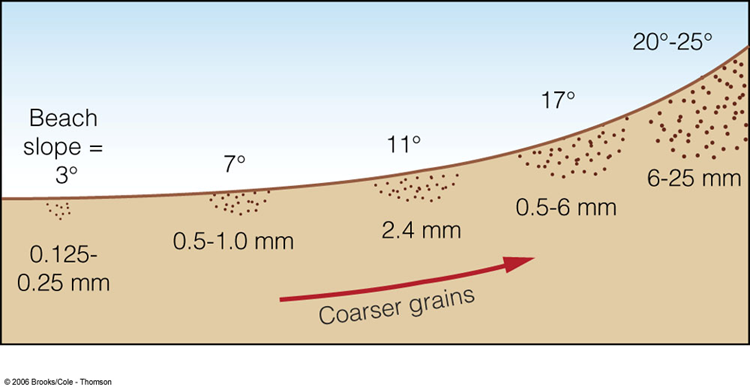
An excellent example of this can be seen at Malaga Cove in Palos Verdes, California. The Palos Verdes Peninsula is being uplifted by the Palos Verdes fault. This uplift is what creates the dramatic cliffs that back the beaches along the peninsula. The rocks that comprise the area are a mix of sandstones, siltstones, conglomerates and a handful of others. These rocks erode due to cliff erosion and the particles come to rest on the beaches. Just to the north of Malaga Cove is Torrance Beach and the Palos Verdes fault. Uplift of the peninsula begins at this point. The rocks in the cliffs are mostly siltstones, sandstones and diatomite. These beds change to a conglomerate as you head south along the coast. Erosion of the rocks in the cliffs creates two distinct sediment types on the beach: fine sands near Torrance Beach and cobbles and boulders to the south.

- Size of materials - as discussed above, beaches can be covered in all sizes of sediments. It takes energy to move particles. Beaches with less wave activity have flatter beaches with finer sediments. Ones with high wave energy have coarser sediments and steeper slopes, as the waves are strong enough to wash away the smaller, lighter particle sizes. In some cases, it is not the size of the particle but rather how heavy the particle is that determines what is on the beach. Some minerals heavier than others, like magnetite, pyrite, galena, garnets. During periods of heavy wave activity, the waves will strip off lighter particles and leave behind these heavy minerals, concentrating them in the beach sand.
- Composition - Beach sands are derived from the breakdown of rocks (or reefs, etc.) in the surrounding region. THEREFORE, whatever is nearby will create what is on the beach. OR, what is in the beach sand MUST also be in the rocks nearby. There is a wide variety of compositions on the world's beaches. Below are some sand samples from around the world showing different compositions.
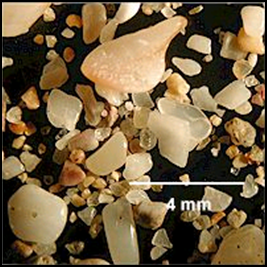
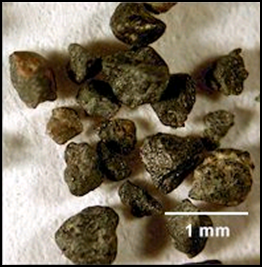
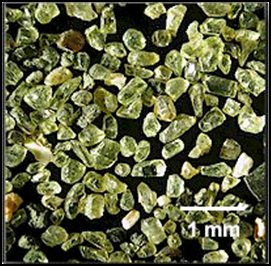
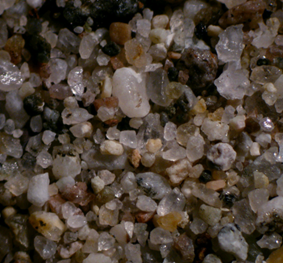
Shells - Cabo, Baja Mexico
http://www.microscope-microscope.orgBasalt - Waianapanapa, Maui
http://www.microscope-microscope.orgOlivine - Guam
http://www.microscope-microscope.orgMinerals - Ventura, California
http://www.microscope-microscope.org - Color - since beaches can be comprised of particles of various compositions, their color can vary, too, from the typical "tan" of mineral sand beaches, to white quartz or coral beaches, to green olivine beaches. The composition of the particles will dictate the color of the beach.
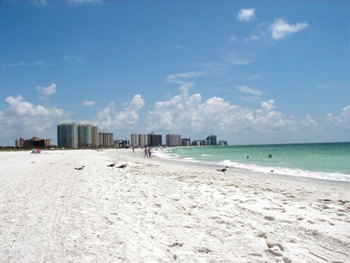
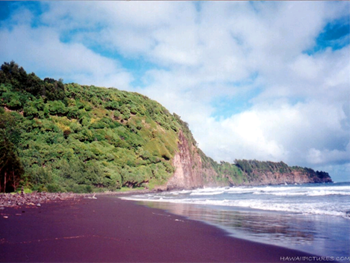
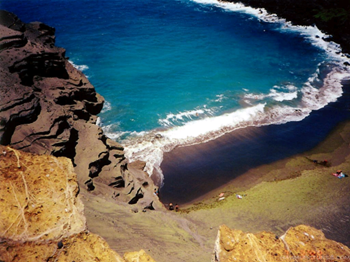
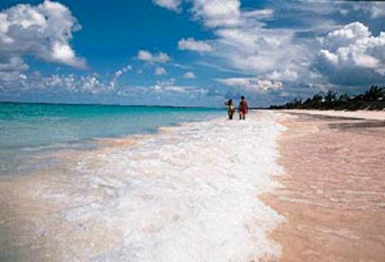
White Sand Beach - Sand Key, Florida
© Sonjia Leyva 2003Black Sand Beach - Hawaii’i
http://www.hawaiipictures.comGreen Sand Beach - Papakolea, Hawaii’i
http://www.hawaiipictures.comPink Sand Beach - Harbour Island, Bermuda
http://www.majesticholidays.com
Sources of Beach Sand
Beach sands are derived from the breakdown of rocks (or reefs, etc.) in the surrounding region. THEREFORE, whatever is nearby will create what is on the beach. OR, what is in the beach sand MUST also be in the rocks nearby!- In California - lots of rocks = lots of broken rock bits = lots of bits of minerals = lots of mineral beach sands.
Near Coral Reefs - Lots of organic material = lots of broken bits of organic material + closer to beach than other eroded particles = beach full of coral reef fragments
Heavy Mineral Sands - Some minerals heavier than others (Magnetite, pyrite, galena, garnets). Therefore, it takes energy to move particles; the larger the particles, the more energy is needed to move them.
Oolitic Sands - Ooites (aka ooids) form as CaCO3precipitates out of water and forms a CaCO3 (lime) mud on bottom of the sea floor. Pieces of mud get ripped up by wave action; the ripped up pieces get rolled into balls by the gentle waves and eventually harden into ooites.
| Sand Type | Source |
| Shells (biogenic) | lots of shells (kelp bed, tide pool) just offshore. |
| Black (basaltic) sands | Erosion of basaltic lava flows which comprise many South Pacific islands (shield volcanoes) |
| Green (Olivine) Sand | Erosion of basaltic lava flows containing lots olivine |
| Coral (biogenic) sands | Breakdown of coral reefs just offshore |
| Mineral sands | Breakdown of rocks in surrounding area |
<< HOME |
||
